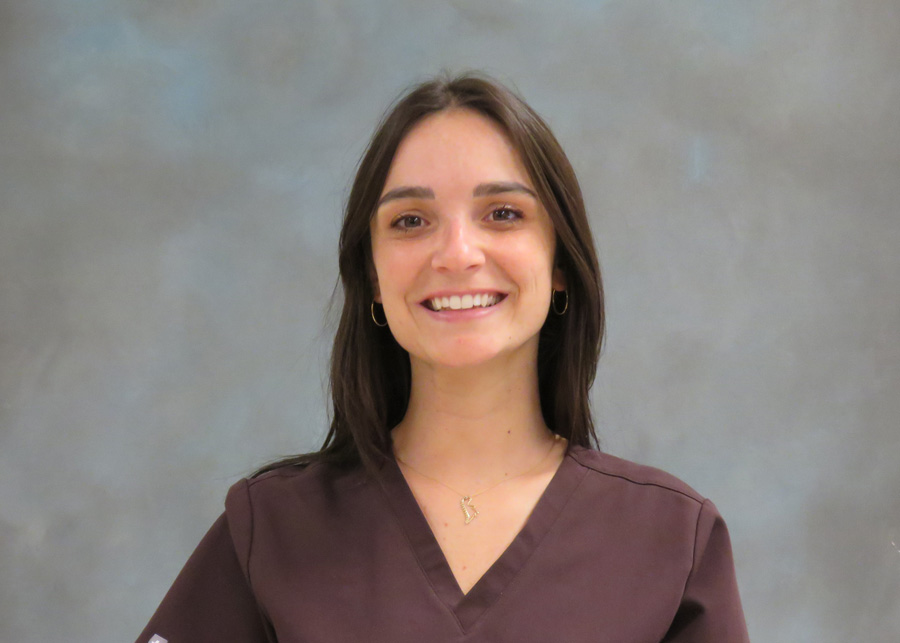Blasto causes eye disease in up to half of infected dogs
Fungus is highly abundant and can be found in a wide range of environments, from the arid desert to Antarctica. Fortunately, very few species are naturally pathogenic, but fungal infection is not uncommon in small animal patients.
Blastomycosis, caused by Blastomyces dermatitidis, is the most common systemic fungal infection reported in dogs and cats in Illinois. Patients are typically infected through inhalation of fungal spores but can also be infected via spore ingestion or wound contamination.
Once in the body, the fungus can spread via the bloodstream and lymphatics to other sites. Most commonly affected tissues include the lungs, lymph nodes, bones, skin, eyes, prostate, testicles, and brain. Therefore, clinical signs vary and can include fever, cough, lymphadenomegaly, and ulcerated skin lesions or draining tracts.
Diagnosis of Blasto
Diagnosis of blastomycosis can be challenging. If your patient has an enlarged lymph node or skin lesion, it is best to obtain a cytology specimen via fine-needle aspirate or impression smear to directly screen for fungal organisms. Routine staining such as with Diff Quik is fine for in-house analysis. Samples can also be submitted to a laboratory, such as the University of Illinois Veterinary Diagnostic Laboratory.
![[blastomyces in lymph node]](https://vetmed.illinois.edu/wp-content/uploads/2021/04/pu-fleming-fig1-300x225.jpg)
Blastomycosis causes ocular disease in up to 50 percent of infected dogs and can also cause ocular disease in cats. Unfortunately, signs often begin in the posterior half of the globe, necessitating a fundic examination for early detection. Ocular signs vary and can include conjunctivitis; anterior, posterior, or panuveitis; eyelid granuloma; retinal detachment; optic neuritis; and secondary glaucoma (Fig. 2). Subretinal fungal plaques can range from pinpoint to multiple optic nerve diameters in size and often appear like gray to brown fluffy lesions in the tapetal or nontapetal fundus (Fig. 3).
![[eye of labrador retriever with blastomycoses and glaucoma]](https://vetmed.illinois.edu/wp-content/uploads/2021/04/pu-fleming-fig2-300x296.jpg)
Treatment of Blasto
Systemic fluconazole is currently the antifungal of choice in managing blastomycosis patients with ocular involvement. This is because the drug has shown superior penetration into the eye compared to other antifungals. Topical antifungal therapy is not typically necessary or recommended.
![[cat's eye with fungal plaques]](https://vetmed.illinois.edu/wp-content/uploads/2021/04/pu-fleming-fig3-300x225.jpg)
If the intraocular pressure (IOP) is low (as expected with inflammation), topical atropine should also be prescribed and may be used 2 to 3 times daily to encourage mydriasis. That being said, IOP monitoring is key, and atropine should be discontinued with any indication of glaucoma onset.
Oral steroid therapy at an anti-inflammatory dose can be beneficial in preserving vision in blastomycosis patients with ocular involvement. In patients with secondary glaucoma, topical dorzolamide or dorzolamide/timolol can be used up to every 4 to 6 hours as needed for IOP control, in addition to aggressive anti-inflammatory therapy. Latanoprost use should be avoided.
Recovery Period
In many cases, patients will respond to therapy, and treatment can be slowly tapered once the uveitis is controlled. Retinal lesions may disappear or become scars (pigmented or nonpigmented, sometimes hyper-reflective) with well-defined borders. On appropriate therapy, ocular signs should improve within 7 to 14 days.
Blind eyes that fail to respond to therapy should be removed once the patient is stable enough to undergo anesthesia. This is recommended for comfort and to reduce fungal burden, as these unresponsive eyes may continue to harbor viable fungal organisms.
Blastomycosis is often a frustrating disease, but close clinical monitoring can contribute to treatment success. Even in patients that lack ocular signs, it is important to perform a full ophthalmic examination at each recheck and to instruct owners to call you at the first sign of ocular involvement (such as redness, squinting, cloudiness, or vision changes). Referral to an ophthalmologist for co-monitoring or treatment can also be considered.
For more information about managing ocular disease in your patients, please do not hesitate to contact the University of Illinois Ophthalmology Service either by phone or via our consult e-mail: vet-eyes@illinois.edu. Every effort is made to return consult calls and emails the same day or within 24 hours.
By Kathryn Fleming, DVM, PhD, DACVO

![[Dr. Kathryn Fleming examines a cat's eyes]](https://vetmed.illinois.edu/wp-content/uploads/2021/04/pu-fleming-blasto.jpg)


